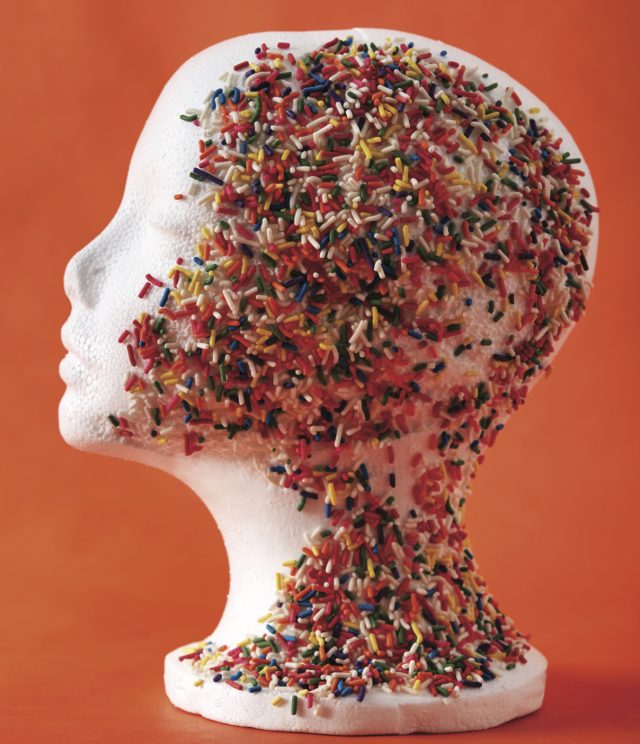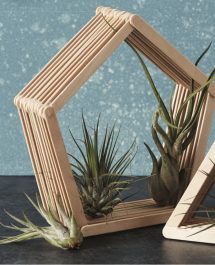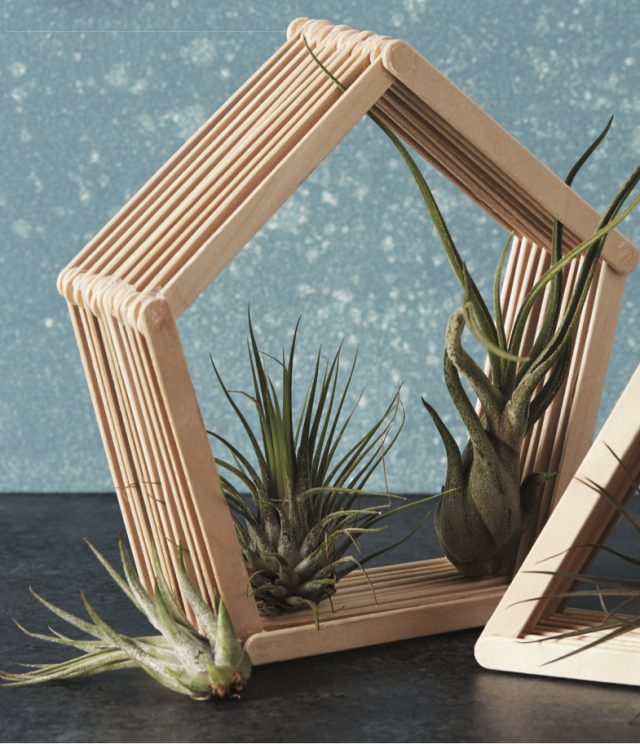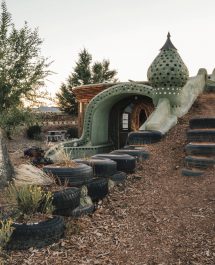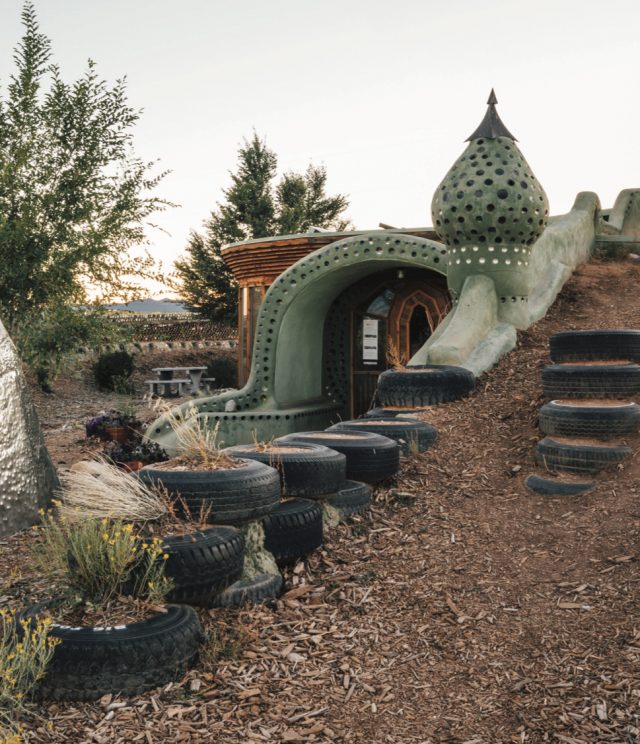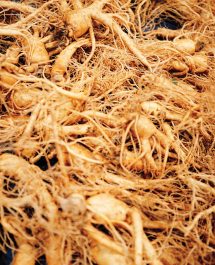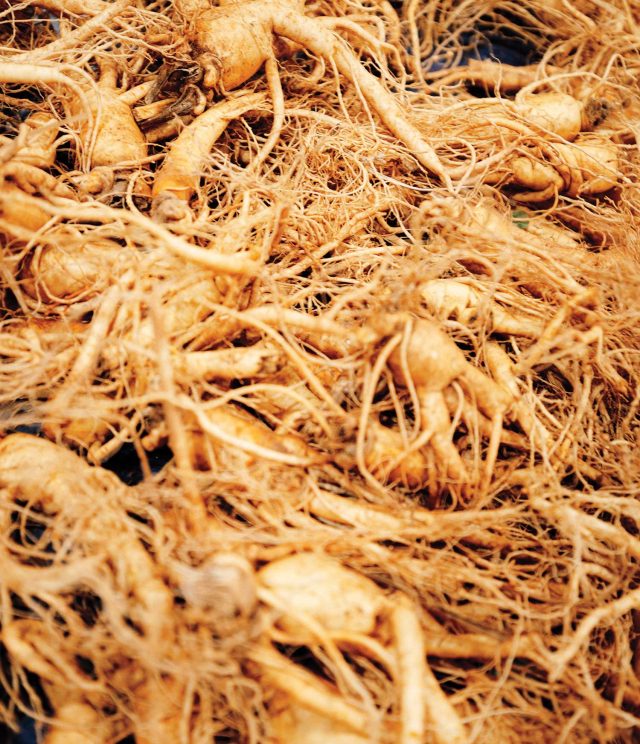
STORY BY SANDRA S. SORIA ✷ PHOTOGRAPHS BY DAVID ENGELHARDT
Not convinced?
Well, you haven’t met Briana Warner. A former diplomat in the U.S. Foreign Services, she served in conflict-ridden parts of the world like Sudan and Yemen. Now this heroine is casting about for solutions to big issues near her home in Portland, Maine. Issues such as warming Atlantic waters that could disrupt lobster habitats in a dramatic way in the not-so-distant future and threaten the livelihoods of the fishermen and women who depend on the crustaceans.
The solution Briana found was floating in the same nooks and crannies of coastal Maine that lobsters enjoy—kelp. And, though many might think of kelp only as the slimy greenish sea stuff that wraps around swimmers’ legs, Briana saw it as hope for fishermen, for the planet, and for our health. And she dove right in.

Now, she’s CEO of Atlantic Sea Farms, the first commercially-viable seaweed farm in the United States. It was founded in 2009 with the goal of diversifying how our coastal waters are used and providing a fresher, healthier alternative to imported seaweed products, which can be dried, dyed, and stripped of nutrients.
Since Briana took the helm in 2017, she’s overseen rapid growth. When she took over, the company was harvesting 30,000 pounds of kelp. This harvest season they’ll pull a million pounds of line-grown kelp ashore. She’s done it with a three-pronged approach: convince more and more fisherman to become farmers in the lobster off-season; provide them the training and support to get started; and develop products that would entice Americans to try the clean, green sea vegetable. For the enticement, they’ve developed ready-to-go offerings like jars of fermented Seaweed Salad and Sea-Chi, frozen Kelp Cubes that are ready to drop into your smoothie, and strips of fresh-frozen kelp to toss with other greens.
And try it, you should. Seaweed is one of the most nutrient-dense plants on the planet. In fact, it has 10 times as many minerals as plants grown in soil, including iodine and magnesium, which aren’t produced by our bodies. Its leaves also hold an alphabet of vitamins, from A to the all-important K to omega-3s. You’ll get fiber and protein too. All of this in one tasty umami-rich veggie that adds a subtle kick to salads and dishes. (Briana shares some of her family’s favorites here.)
Team Naturally visited Atlantic Sea Farms’ brand new, 27,000-square-foot production facility in Biddeford, Maine, to learn more about the sustainably-grown, minimally-processed vegetable. We got to harvest some of the power veggie. And, between mouthfuls of kelp, we chatted with Briana. We wanted to learn more about the mission of this one-of-a-kind company and about the future of this net-positive food (kelp forests remove 20 times more carbon from the atmosphere than land-based forests and mitigate ocean acidification). We think you’ll want to learn more too.


Q: Tell me a little bit about your background, Briana, and how you found your way into kelp farming.
A: My background is as a development economist, including doing several tours as a diplomat in the U.S. Foreign Services. I never saw myself as a seaweed farmer. I’m still not a seaweed farmer. But when people ask me, How’d you get into seaweed? I usually have a joke ready: I’ve dreamed about it since I was a baby. It’s not something I would ever have seen myself being a part of, and yet here we are.
Q: What made Maine the place to farm kelp?
A: North of Portland, in the rural parts of Maine, lobster Is the only employer. And we have 4,000 plus lobster license holders in Maine. It’s an owner-operator fishery. These are small boats. In essence, it’s a generational fishery. And what that means is they’re putting their own conservation measures in place because they’re trying to preserve the livelihood for their kids and their kids’ kids. There are no other fisheries of any scale here in Maine; we’re completely dependent on a lobster monoculture.
Q: What did you see looking down the road?
A: No matter what we do in terms of conservation, the Gulf of Maine is warming so quickly that the lobster fishery is going to become increasingly volatile. So, it feels to me like rather than waiting to see what happens—and we always seem to wait for looming disaster before we do something—it’s an opportunity to do something right now when people are doing fairly well in the industry.
Q: And did you have a light-bulb moment that seaweed could be the solution?
A: Seaweed seems like this perfect opportunity because harvesting is mostly in the lobster off-season. It uses the exact same equipment that you use for lobstering. It’s in the same general area as people fish, so they know the area very well. It’s just a perfectly complementary product to their lobster income.
Q: Was it a heavy lift to convince longtime fishermen to become seaweed farmers?
A: We certainly had to make it reasonable. When you think about it, it’s a huge ask, right? Like, Hey guys, here’s this stuff that you’ve never seen in a grocery store because we’re the first ones to do it. We know you’ve never seen it actually farmed before. But why don’t you go ahead and apply for a lease to farm it. We’ll help you with the lease application and then you invest in putting a farm in. I’m going to give you some schools of seed that look like a bunch of mold. Go grow it for six months in the water, harvest it, and I promise I’m going to pick it up. It was crazy to trust us with that before it was proven out. But they did.
Q: Did you get a sense of how many had eaten kelp before?
A: Oh, none.
Q: Sounds like you have a firm idea about that.
A: Maybe there were a couple but not that I know of. I was out on a farm last year with the farmer who had been with us the longest, one of the two that initially started farms, and I grabbed a piece to eat from the chop bag. He’s like, I’ve never tried it. And I said, Keith, you’ve been farming this for four years—for four years!
Q: I’m beginning to think you might be a really good salesperson. Must be the diplomat in you.
A: When I talk to them, I tell them farming kelp helps to take carbon and nitrogen out of the water. It’s a climate-friendly food. It uses no arable land, no fresh water, no pesticides. And we found that it actually provides really essential ecosystem services for shell-bearing organisms because it reduces the pH and reduces ocean acidification. So, when we’re growing kelp in the water and then we remove it, we’re actually making the ocean better and less acidic than it was before. But I never once said the phrase climate change to any of our partner farmers.
Q: Why is that?
A: I think one of the problems we have in America right now is that we start from the most abrupt and aggressive place, right? These are people just trying to make a living on the water, and they fish. And they’re trying to figure out how to make sure that their children continue to have livelihoods on the ocean. Why approach people with issues that they feel unable to solve? And I think when we talk about climate change, we often want to beat people over the head with a bat and then we wonder why no one does anything, why it feels hopeless.
Q: Do they at some point understand that they are climate-change warriors?
A: After a year or two of farming with us, I’ve heard every one of our partner farmers say, Yeah, and I’m fighting some of the effects of climate change. These are people who vary greatly in their political beliefs, but every single one of them is united in the fact that they want a healthier ocean—which they’re all dependent on—and that this can help achieve that.
Q: Did it become apparent right in the beginning that you would also need to work on the back end and manufacture ready-made foods or easy-to-use kelp products to build a market for kelp?
A: Right away, mostly because who else is going to do it for us, right?
Q: And a sustainable food that comes from the cold Atlantic waters off Maine seems like a selling point to me.
A: If someone’s eating our kelp and they tell us the lot number that’s stamped on the top of the jar or the frozen kelp that they’re buying, we can trace it back not only to the farm it was growing on and the farmer who grew it, but the tank we grew the seed in and where we pulled that seed from in the wild to grow it in that tank on what day, at what time, from what bed.
Q: Okay, that’s got to be the most transparently sourced food item…
A: It’s wild. Nobody else can tell you where their seed comes from or what line of crop it comes from. We can tell you all of that. Not only do we produce all our food, but we also grow all our own seed as well. We do all our farming with our partner farmers. We run all the trucks to all the docks. We do all the harvest bags. We manufacture every pound of kelp that we sell. That vertical integration and the ability to really understand where your food is coming from and where it’s going and what it means is very unique in the food world. So, we’ve been producing our food from the beginning mostly out of necessity. And now it’s absolutely out of choice.




Q: How do you describe the taste of kelp to people who haven’t tried it?
A: Kelp right out of the ocean tastes like the water, which is one of the reasons that we grow it in the cold waters of Maine. It’s briny, it’s fresh, it’s umami-
flavored. By the time we get it to consumers, it’s blanched. We knock off a lot of that ocean flavor because we know American consumers are a little hesitant to have an ocean-y umami bomb in their faces. And it turns bright green because it’s in hot water versus that bright green seaweed salad that’s dyed with yellow number 5 and blue number 1.
Q: I think that when people learn that kelp is so nutrient-packed it has to become more appealing? I mean, talk about a superfood!
A: It really is a superfood for the environment and their bodies. I think that’s the wildest part about kelp because it’s regenerative in every way. It’s good for the ocean, it’s good for our coastal communities, and it’s good for the consumer. I’ve never seen a product like that.

Q: I see your children chowing down on kelp—that’s a testimonial. It must feel great to feed them something so good for them and that you’ve had such a hand in bringing to the table.
A: It is cool to be able to feed my kids something I’m really, really proud of and know that they’re better because of it. I mean, we don’t have enough iodine in our diets. We don’t have enough magnesium, calcium, or omega-3s in our diets. Kelp provides all of those nutrients. And I look at them in their sweet little faces and know that we’re handing them a shit world. We’re handing them rising seas, warming oceans, droughts. With kelp, I feel like I’m not only handing them a better meal, but also hope for a better future.
Q: That’s why we love your story, you’re doing something for them—and so many others—on so many levels.
A: You know, people have been talking about farming kelp in the United States for 10, 15 years. And it wasn’t until fishermen got involved that people actually started doing it at scale and really making a fundamental difference. To me, that is just so cool. It’s not coming from people who are like, I’m going to make a huge difference in the world. And then they talk about it really beautifully, and then they make very little difference other than talking about it. These guys aren’t talking about it, but they sure as hell are doing it. And that’s pretty exciting.

Lemony Basil-Kelp Pesto
Makes 1 cup
Gather
2 ounces fresh basil leaves (no stems; about 6 cups loosely packed)
½ cup extra-virgin olive oil
1/3 cup pine nuts, lightly toasted and cooled
1/3 cup finely grated Pecorino cheese
2 tablespoons fresh lemon juice
1 frozen Atlantic Sea Farms Fresh Kelp Cube
1 clove garlic, gently smashed and peeled
½ teaspoon kosher salt
To Make
In a blender, combine the basil, oil, pine nuts, cheese, lemon juice, kelp cube, garlic and salt. Purée until smooth.
Good to Know: This recipe covers 12 to 16 ounces of noodles, depending on how saucy you like it! This pesto is also great on pizza, in sandwiches, swirled into soups, served as a crudités dip, or used as a sauce for grilled vegetables, fish, or meats.

Kelp Kimchi Fried Rice
Makes 2 servings
Gather
2 tablespoons extra-virgin olive oil
3 scallions, thinly sliced
1 teaspoon finely chopped fresh ginger
1 cup (6 ounces) Atlantic Sea Farms Sea-Chi kelp kimchi
3 tablespoons kimchi juice
2 cups cooked, cooled rice (short, medium, or long grain)
2 teaspoons toasted sesame oil
1½ teaspoons soy sauce or tamari
3 cups chopped bok choy, Swiss chard, or spinach
2 large eggs, fried and seasoned with salt, soy sauce, or tamari
Optional toppings: torn or slivered nori, sliced scallion, or furikake
To Make
In a large skillet, heat olive oil over medium heat until hot but not smoking. Add scallions and ginger, and cook, stirring occasionally, until tender, about 3 minutes. Add kimchi and kimchi juice. Cook, stirring occasionally, until hot and liquid is mostly reduced, about
2 minutes. Add rice, sesame oil, and soy sauce, and stir to incorporate well.
Increase heat to medium-high. Add bok choy or greens and cook, stirring, until greens are wilted and just tender, 2 to 3 minutes.
Serve hot, topped with fried eggs and optional toppings, as desired.
Pro Tip: For kimchi juice, place kimchi in a mesh sieve set over a bowl. Press with a wooden spoon to extract the kimchi juice.



